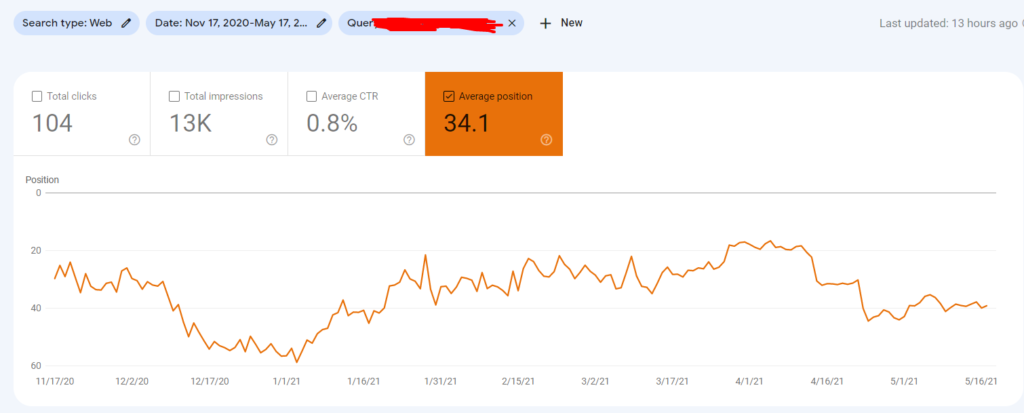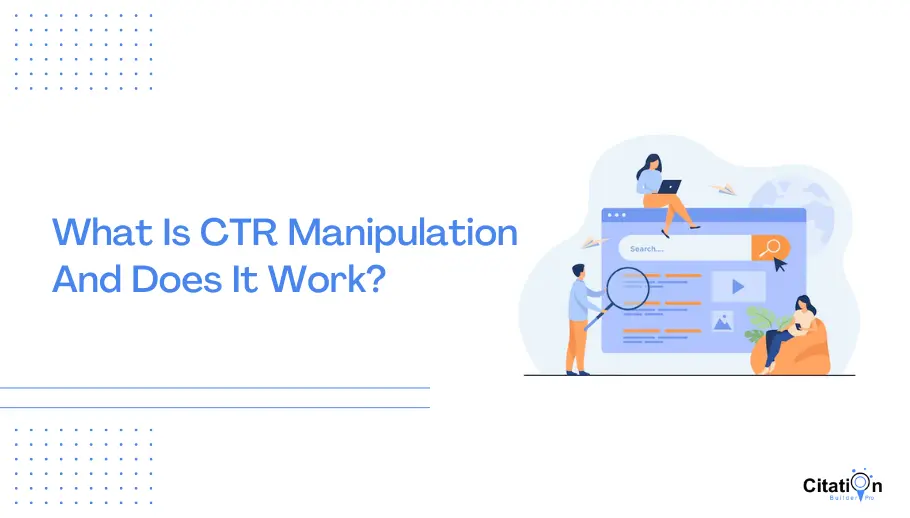Rise Regional Visibility with GMB CTR Manipulation Techniques
Rise Regional Visibility with GMB CTR Manipulation Techniques
Blog Article
Attaining Online Success Via Strategic CTR Control
In the electronic landscape, achieving on the internet success progressively hinges on the nuanced art of critical click-through price (CTR) control. Checking out the fragile interaction of psychology, analytics, and creative execution exposes a path to not just improve CTR but also grow lasting relationships with audiences.

Comprehending Click-Through Fees
Understanding the complexities of click-through rates (CTR) is important for marketing professionals aiming to maximize their digital campaigns. CTR, specified as the proportion of individuals who click a details web link to the number of overall individuals that watch a page, advertisement, or email, functions as a critical metric in examining the effectiveness of internet marketing approaches. A higher CTR indicates that the material resonates well with the target market, triggering interaction and communication.
To calculate CTR, the formula is simple: divide the variety of clicks by the number of impacts and multiply by 100 to share it as a percent. This dimension not just gives insight into the efficiency of advertisements however additionally discloses possibilities for renovation. By examining CTR, marketing experts can recognize which aspects of their campaigns-- such as headings, pictures, or call-to-action switches-- are most efficient in driving clicks.
Additionally, comprehending industry benchmarks for CTR is important, as they can differ considerably throughout different markets. By continually keeping an eye on and adjusting strategies based upon CTR information, marketers can fine-tune their projects, improve individual engagement, and inevitably drive conversions, thus adding to the general success of their digital advertising and marketing initiatives.
The Psychology of Online Behavior
The efficiency of electronic marketing techniques mostly rests on the mental triggers that affect on the internet actions. Recognizing these triggers is vital for crafting compelling material that reverberates with users and drives interaction. Secret psychological principles, such as social proof, shortage, and urgency, play a substantial duty in shaping users' decisions.
Social evidence, for example, leverages the propensity of individuals to seek to others for guidance, making endorsements and customer evaluations powerful devices in convincing possible customers. Scarcity methods, which produce an assumption of minimal availability, can urge individuals to act swiftly, fearing they might lose out on an opportunity. In a similar way, urgency infuses a sense of immediacy, motivating individuals to make quicker choices and reducing the probability of laziness.
Moreover, the cognitive prejudices that impact online habits, such as anchoring and loss hostility, can be utilized to improve advertising initiatives. By tactically placing details and stressing potential losses over gains, marketing professionals can dramatically influence customer choices. In an increasingly affordable digital landscape, understanding the intricacies of online actions psychology is vital for attaining sustained success and optimizing click-through rates.
Techniques for Improving CTR
Improving click-through rates (CTR) is important for maximizing the effectiveness of electronic advertising and marketing projects. Incorporating numbers, questions, or psychological triggers can substantially improve interaction.
One more effective method is leveraging high-grade visuals. Involving pictures or video clips can draw customers in, making them most likely to click the link. In addition, making use of A/B screening allows online marketers to trying out various content formats, identifying which versions produce the highest possible CTR.
Purposefully putting calls-to-action (CTAs) within your material is additionally critical. CTAs i thought about this must be clear, persuasive, and positioned plainly to assist customers towards the desired action. In addition, personalizing content based upon individual behavior and choices can produce a much more appropriate experience, raising the probability of clicks.
Lastly, guaranteeing that touchdown pages are maximized for mobile phones is essential, as a substantial portion of website traffic now originates from smart devices. A smooth user experience across all tools can considerably enhance CTR and drive much better outcomes for digital marketing efforts. By carrying out these techniques, marketing professionals can effectively boost their click-through rates.
Measuring and Analyzing Your CTR
Measuring and analyzing click-through rates (CTR) is an important component of assessing the success of electronic advertising campaigns. CTR, specified as the proportion of users who click a specific web link to the total number of individuals who view the page, offers as a vital performance indication. A comprehensive analysis starts with the gathering of CTR information throughout various channels, including e-mail, social media, and paid promotions.

In addition, tracking trends gradually is necessary. A regular boost in CTR may indicate reliable approaches, while a click to read decrease can signal the requirement for prompt changes. Relative analysis with market criteria better contextualizes performance, using understandings right into essential renovations.
Ultimately, determining and evaluating CTR not only educates critical decision-making yet likewise fosters a culture of continual improvement in advertising efforts, making sure that campaigns successfully get to and reverberate with target market. CTR Manipulation.
Honest Considerations in CTR Manipulation
As digital advertising increasingly counts on click-through rates (CTR) to gauge efficiency, ethical considerations surrounding CTR manipulation have concerned the leading edge. While enhancing CTR via tactical techniques can improve presence and interaction, it is essential to assess the ramifications of such methods.
Adjusting CTR with deceptive methods, such as clickbait headlines or deceptive ads, can deteriorate customer trust and damage brand credibility. These practices might produce Visit Your URL temporary gains yet often cause long-lasting repercussions, consisting of customer reaction and regulatory scrutiny (CTR Manipulation). Honest advertising and marketing emphasizes openness, motivating services to present accurate info that straightens with user expectations
Furthermore, the increase of fabricated intelligence and automated click generation provides additional honest obstacles. Using bots or various other automated systems to blow up CTR weakens the integrity of efficiency metrics and alters advertising and marketing data, complicating decision-making procedures.
Ultimately, marketing experts need to stabilize the quest of greater CTR with ethical standards that focus on honesty and consumer well-being. By promoting genuine interaction and supplying value to customers, brands can accomplish lasting success while upholding ethical marketing principles. In browsing these factors to consider, companies will not just secure their reputation yet also cultivate a devoted customer base.
Verdict
In summary, achieving online success through calculated CTR manipulation needs a diverse approach that balances optimization methods with honest considerations. Enhancing content quality, making use of influential aspects, and continually evaluating individual habits add to raised involvement and sustained passion. By prioritizing openness and avoiding deceptive strategies, marketing experts can foster customer trust fund and loyalty. Ultimately, a commitment to ethical requirements in CTR techniques not just boosts performance but additionally grows long-term partnerships with target markets.
Report this page